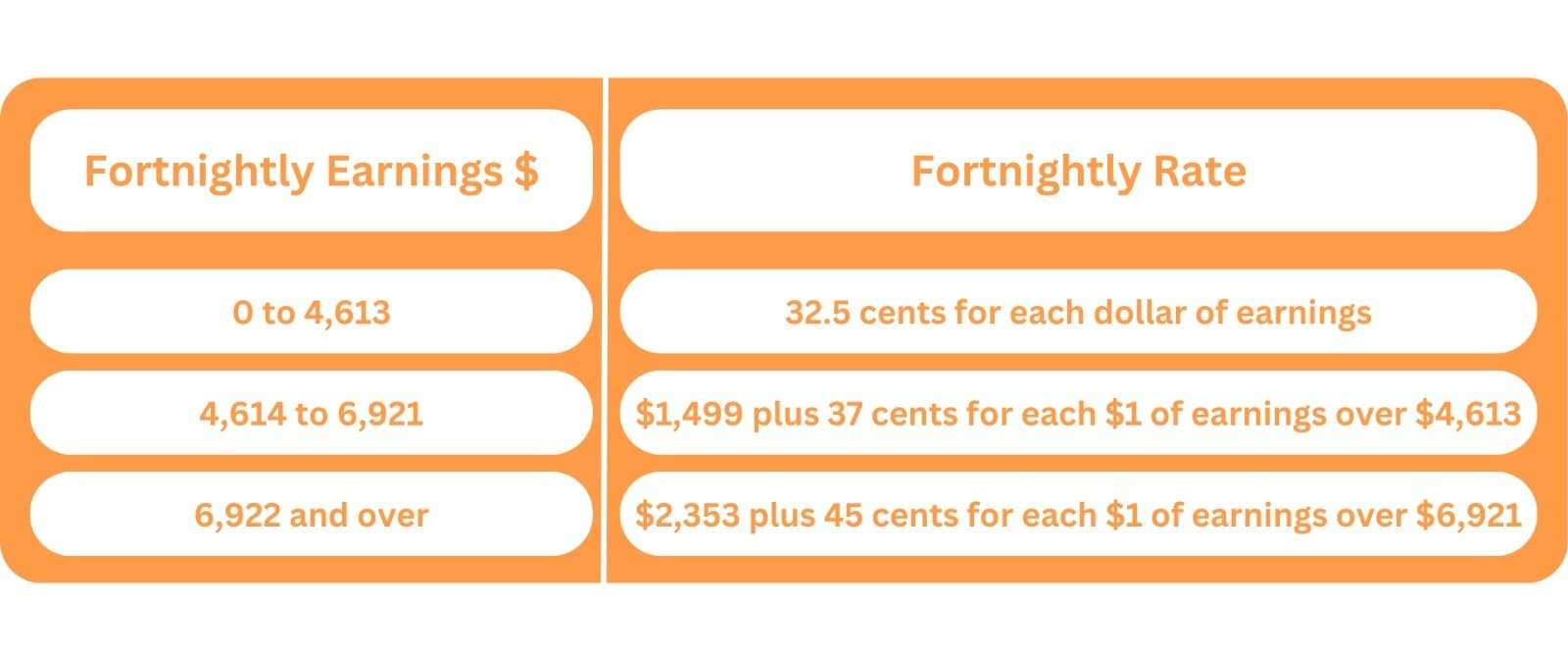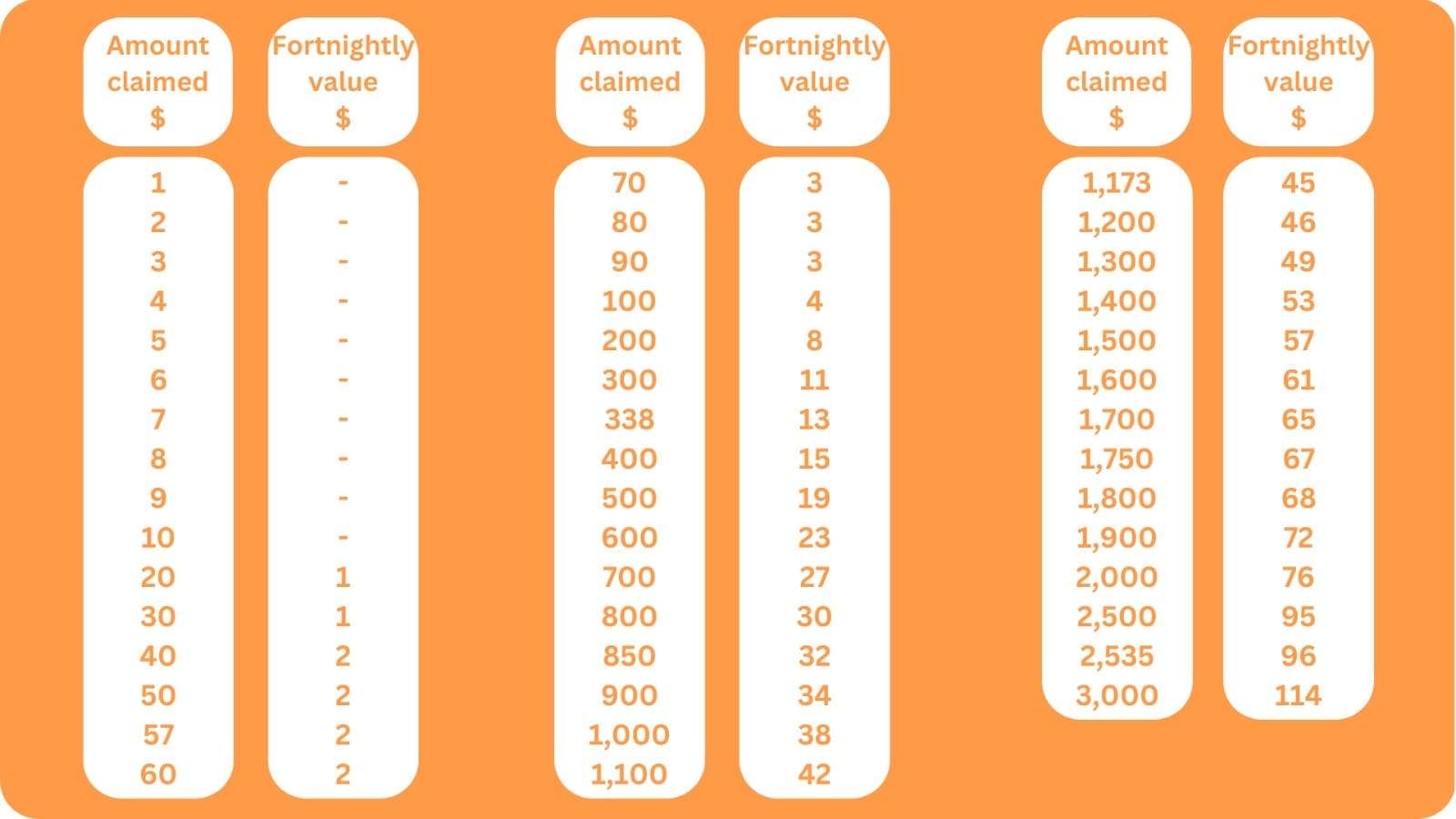The complexities of tax calculations can be a difficult task for both employers and employees. The Fortnightly Tax Table, issued by the Australian Taxation Office (ATO), addresses this challenge head-on. Most Australian businesses struggle with payroll tax compliance, often resulting in errors and penalties. The ATO’s updated Fortnightly Tax Table 2023-24 comes as an essential solution.
It offers a detailed guide on the appropriate amount of tax to withhold from employees’ fortnightly earnings, including considerations for allowances, bonuses, and Medicare levy adjustments. This table simplifies the payroll process, ensuring accuracy in tax withholding and compliance with Australian tax laws.
Understanding the Fortnightly Tax Table
The Fortnightly Tax Table is pivotal for businesses and employees, ensuring accurate tax calculations. This year’s table reflects the latest tax legislation, offering clear guidance for PAYG withholdings. It’s tailored to assist employers in determining the correct amount of tax to withhold from employees’ wages on a fortnightly basis.
Understanding this table is crucial, not just for compliance but also for maintaining financial stability within the organization. It’s a tool that aligns payroll processes with current tax rates and thresholds, adapting to any legislative changes that may have occurred since the previous year.
Key Updates in PAYG Withholding for 2023-24
- Revised Tax Brackets: Reflects adjustments in income thresholds, affecting tax withholdings.
- Updated Tax Rates: Includes changes to the tax rates, ensuring accurate withholding amounts.
- Regulatory Compliance: Ensures adherence to the latest tax laws and regulations.
These updates signify the government’s ongoing efforts to align tax practices with economic conditions, impacting how businesses manage payroll.
Fortnightly Tax Table for Payroll Calculation:
Determining PAYG Withholding Amounts
Determining the correct withholding amounts under the Pay As You Go (PAYG) system is crucial for both employers and employees. This process ensures that the right amount of tax is withheld from payments made regularly, aligning with individual tax liabilities. Accuracy in this step is key to avoiding under or over-taxation throughout the financial year.
Employers need to consider various factors, such as the employee’s earnings, tax file number declaration, and any applicable tax offsets or levies, including the Medicare levy adjustment. Employers should use the withholding tax table and PAYG withholding publications to calculate the correct amount of tax to withhold.
These resources are particularly crucial when the tax tables for the 2023–24 income year are updated or new tax tables are introduced. They are essential for situations like calculating study and training support loans or for employees on working holidays. Employers must refer to the relevant fortnightly tax table for working holiday makers or training support loan components.
Using a tax-withheld calculator regularly is advisable. It calculates the correct amount to withhold based on total fortnightly earnings, including allowances and irregular payments. Keeping up-to-date with the latest tax rates and thresholds provided by the Australian Taxation Office (ATO) is essential.
Regular review of these amounts is recommended to account for any changes in an employee’s circumstances, such as entitlements to tax offsets or variations in the Medicare levy. This ensures accurate PAYG withholding and compliance with taxation regulations for each income year.
Implications for Study and Training Support Loans
The fortnightly tax table helps calculate withholding amounts for study and training support loans (STSL). When using this table, employers must withhold the correct amount from employees’ fortnightly earnings. The withholding amount is based on the payee’s tax file number declaration and includes the study and training support loan component. From 1 July 2023, the ATO’s updated tax rates and tables, including those for STSL, must be used. Employers should ensure their payroll software package is updated to accurately calculate the withholding tax, including any medicare levy adjustments, for employees with a study and training support loan.
Tax File and Withholding Declarations
Tax files and withholding declarations are integral to Australia’s taxation system. These declarations provide critical information for accurate tax withholding and reporting. Important aspects include:
- Tax File Number Declaration: Employees must provide their tax file number (TFN) to their employer. This information is crucial for determining the correct rate of tax withholding.
- Withholding Declaration Updates: Employees should update their withholding declarations for changes in circumstances, such as financial investment income or claiming the tax-free threshold from another payer.
- Understanding Tax Offsets: Employees may be eligible for tax offsets or deductions that impact the amount of tax withheld from their payments.
- Medicare Levy Variations: Withholding declarations can include variations for the Medicare Levy, depending on individual or family circumstances.
- Compliance and Accuracy: Employers must ensure that the information provided in the declarations is accurate and compliant with ATO guidelines. Inaccuracies can lead to incorrect tax withholdings and potential legal issues.
Accurate tax files and withholding declarations are essential for both employees and employers to ensure proper tax management and compliance with Australian tax laws.
Ready Reckoner for Tax Offsets
Adjustments for Medicare Levy and Allowances
Calculating Medicare Levy Adjustments in PAYG
In PAYG, accurately calculating Medicare Levy adjustments is essential. Employers must consider employees’ Medicare levy variation declarations, as these affect the withholding amount. Allowances, such as those for specific job roles, also impact the total fortnightly earnings and thus the tax withheld. The updated withholding schedules and tax tables for the 2023–24 income year provide guidance on these adjustments, ensuring employers withhold the correct amount of tax, including Medicare levy considerations.

This formula takes into account the total earnings for a fortnightly period and subtracts any allowances and irregular payments. The result represents the Medicare Levy Adjustment, which is used to determine the correct amount of tax to be withheld from payments by the PAYG system. It’s important for employers to accurately calculate this adjustment to ensure compliance with tax regulations and to withhold the appropriate amount of tax from employee payments.
Foreign Resident Employee
Employers of foreign resident employees must use the fortnightly tax table for withholding tax. They should calculate the withholding amount based on the employee’s fortnightly earnings, ignoring any cents. It’s essential to consider the tax file number declaration and Medicare levy adjustment. Employers must withhold the correct amount for PAYG withholding and report it in the tax return for the income year. For foreign residents, the Medicare levy is typically not applicable. The Australian Taxation Office provides a withholding tax table specifically for foreign residents to ensure compliance. Employers should regularly update their payroll software package to reflect changes in tax rates and thresholds.
Foreign resident Tax Rates

Conclusion
The Fortnightly Tax Table represents a vital tool for ensuring tax compliance in Australia. It simplifies the often complex task of calculating the correct amount of tax to withhold from employees’ wages. By adhering to these guidelines, employers can avoid common payroll errors and potential penalties. The ATO’s continued effort to streamline tax processes and provide clear, accessible information is commendable. As we adapt to these updated rates, it’s important to ask: How will these changes impact your payroll strategies and overall financial planning in the upcoming fiscal year?
FAQs
1. How do I account for the Medicare Levy when using the Fortnightly Tax Table?
Employers should consider employees’ Medicare levy variation declarations. The Medicare Levy Adjustment is calculated by subtracting allowances and irregular payments from total fortnightly earnings.
2. What should I do if an employee’s income changes during the year?
Recalculate the employee’s gross earnings for the new income. Use the appropriate tax table for the revised income bracket and adjust the tax withholding amount accordingly.
3. How do I handle tax withholding for employees with Study and Training Support Loans?
Include loan repayments in the PAYG withholding tax calculations. Employers must update their payroll systems to accommodate these changes.
4. What is the process for lodging PAYG tax returns?
Employers need to calculate tax withholdings, including allowances and irregular earnings. Use updated tax tables and lodge necessary declarations like the Medicare levy variation when applicable.
5. What are the key points for managing payroll according to ATO guidelines?
Understand PAYG obligations and ensure regular reconciliation. Maintained accurate records, adhered to superannuation requirements, and lodged reports timely.





